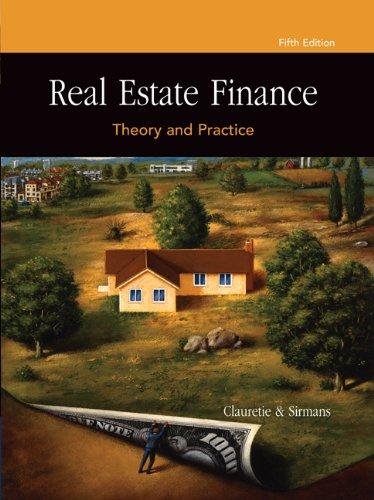Question
Question 1 (2.5 points) Higher required returns Question 1 options: a) decrease stock prices b) are required by the efficient market hypothesis c) increase dividends
Question 1 (2.5 points)

Higher required returns
Question 1 options:
| |||
| |||
| |||
|
Save
Question 2 (2.5 points)

A higher beta decreases the required rate of return.
Question 2 options:
| a) True | |
| b) False |
Save
Question 3 (2.5 points)

A P/E ratio depends on 1. the firm's dividends 2. the price of the stock 3. the firm's per share earnings
Question 3 options:
| |||
| |||
| |||
|
Save
Question 4 (2.5 points)

The dividend-growth valuation model depends on dividends and the required rate of return.
Question 4 options:
| a) True | |
| b) False |
Save
Question 5 (2.5 points)

The use of P/E ratios to select stocks suggests that
Question 5 options:
| |||
| |||
| |||
|
Save
Question 7 (2.5 points)

The use of price to book ratios to select stocks suggests that
Question 7 options:
| |||
| |||
| |||
|
Save
Question 8 (2.5 points)

According to the efficient market hypothesis, purchasing low P/S stocks should produce superior investment results.
Question 8 options:
| a) True | |
| b) False |
Save
Question 9 (2.5 points)

The required rate of return includes the risk-free rate and a risk premium.
Question 9 options:
| a) True | |
| b) False |
Save
Question 10 (2.5 points)

If the required rate of return is 10 percent and the stock pays a fixed $5 dividend, its value is
Question 10 options:
| |||
| |||
| |||
|
Step by Step Solution
There are 3 Steps involved in it
Step: 1

Get Instant Access to Expert-Tailored Solutions
See step-by-step solutions with expert insights and AI powered tools for academic success
Step: 2

Step: 3

Ace Your Homework with AI
Get the answers you need in no time with our AI-driven, step-by-step assistance
Get Started


